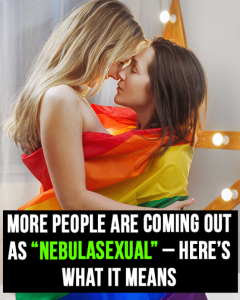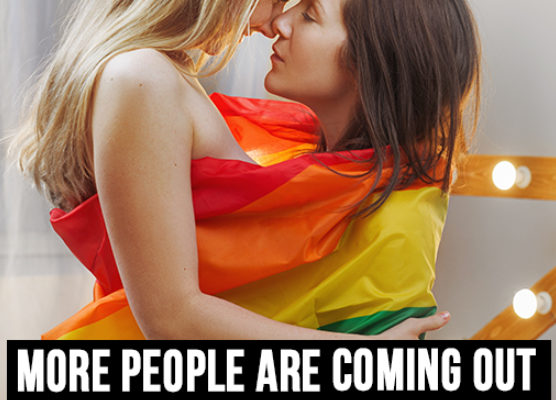🌌 Nebulasexual: A Thousand Words on Attraction in the Fog
In a world increasingly open to diverse expressions of identity, new terms continue to emerge that help people articulate experiences that were once invisible. One such term is nebulasexual—a label that’s as poetic as it is profound. Derived from nebula, the Latin word for “cloud” or “mist,” nebulasexuality describes a state of uncertainty or indistinction around sexual attraction. For many, it’s not about who they’re attracted to—it’s about whether they can even tell what attraction feels like.
This identity is especially resonant among neurodivergent individuals, whose brains process emotion, perception, and social cues differently. For someone with ADHD, autism, or other cognitive variations, the experience of attraction might be tangled with hyperfixation, aesthetic appreciation, or even intrusive thoughts. Nebulasexuality offers a way to name that fog.
🧠 The Intersection of Neurodivergence and Attraction
At its core, nebulasexuality is a neurosexuality—a term that acknowledges how neurological differences shape the way people experience desire. Traditional sexual orientations (heterosexual, bisexual, gay, etc.) assume a clear understanding of attraction. But for some, that clarity never comes.
A person might find someone visually appealing, but struggle to determine whether that feeling is sexual, romantic, platonic, or simply fascination. They might feel drawn to someone intensely, only to realize later it was a sensory or intellectual fixation. This ambiguity isn’t confusion—it’s a legitimate experience.
As one Reddit user put it:
“I’ve been questioning for years because I could never tell if what I was feeling was actually attraction or just… something else. Finding the term nebulasexual was like finally having words for this fog I’ve been living in.”
This quote captures the emotional relief that comes with naming an experience. It’s not about fitting into a box—it’s about finding language that reflects reality.
🌐 How the Term Emerged
The term nebulasexual first appeared in online LGBTQ+ spaces around 2014, coined by Tumblr user Epochryphal. It was inspired by the concept of nebularomantic, which describes someone who struggles to distinguish between romantic and platonic feelings due to neurodivergence.
From there, nebulasexuality grew organically. Communities on Reddit, Tumblr, and Discord began discussing the term, sharing personal stories, and designing flags to represent it. The original nebulasexual flag features gradients of green and orange with a white stripe in the center—colors inspired by the Crab and Orion nebulas. It’s a visual metaphor for the swirling, indistinct nature of attraction.
🧵 Modifiers and Related Terms
Nebulasexuality doesn’t exist in isolation. It’s part of a broader spectrum of identities that explore the complexity of attraction:
- Nebularomantic: Difficulty distinguishing romantic from platonic feelings.
- Nebularoace: A combination of nebulasexual and nebularomantic—someone who experiences both types of ambiguity.
- Quoisexual: A related term under the “quoi” umbrella, describing people who question the very concept of sexual attraction.
These identities aren’t about indecision—they’re about precision. They reflect the reality that attraction isn’t always binary or easily categorized.
🫂 Community and Support
Online spaces have played a crucial role in the growth of nebulasexuality. Forums and blogs offer safe environments for people to explore their identities without judgment. These platforms allow users to say, “I don’t know what I feel—and that’s okay.”
Mental health professionals are also beginning to recognize the importance of these terms. As understanding of neurodivergence expands, so does the need for language that reflects diverse experiences. Therapists working with autistic or ADHD clients may find that nebulasexuality helps validate feelings that were previously dismissed or misunderstood.
And within the broader LGBTQ+ community, there’s growing support for the inclusivity that nebulasexuality represents. As one advocate noted:
“Not everyone experiences attraction the same way, and that’s okay.”
🔍 Criticism and Controversy
Of course, not everyone embraces the term. Some critics argue that nebulasexuality is too niche, too specific, or too confusing. They worry that the proliferation of labels dilutes the meaning of identity.
But for those who identify as nebulasexual, the term isn’t about trendiness—it’s about truth. It’s about finally having a word for an experience that defies conventional categories. And in a world that often demands clarity, embracing ambiguity can be revolutionary.
🖼️ The Symbolism of the Nebula
The choice of “nebula” as a metaphor is no accident. Nebulas are cosmic clouds—vast, beautiful, and mysterious. They’re the birthplaces of stars, yet they appear as swirling fog from afar. This duality mirrors the nebulasexual experience: something powerful and real, yet hard to define.
To identify as nebulasexual is to embrace that mystery. It’s to say, “I may not have all the answers, but my experience is valid.” It’s a rejection of rigid definitions in favor of fluidity, nuance, and self-acceptance.
💬 Final Reflection
Nebulasexuality is more than a label—it’s a lens. It offers a way to understand attraction that doesn’t rely on certainty. It validates the experiences of those who live in the gray areas, who feel deeply but differently, who navigate desire through fog rather than fire.
As more people come out as nebulasexual, the conversation around identity continues to evolve. It becomes richer, more inclusive, and more reflective of the human experience. And in that evolution, we find not confusion—but clarity.
Because sometimes, the most honest thing we can say is: “I don’t know what this feeling is. But I know it’s real.”


